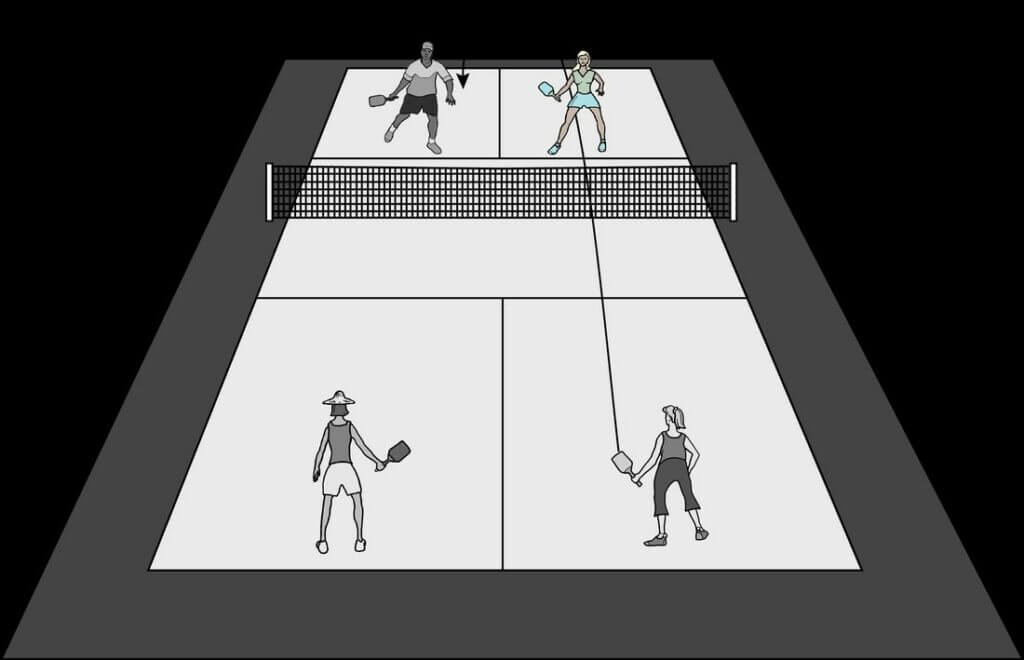by Jenny Foster
Strategy is an important variable when playing pickleball. And a common strategy among players is taking on an offensive move or shot. However, how does a player get on the offense when they’re up at the non-volley zone line?
Simple. They can opt for the offensive lob.
The offensive lob is considered an effective shot thanks to a couple of reasons.
First, opponents expect several things to happen when they are positioned at the non-volley zone line. That is, they anticipate the pickleball to return as a dink or a speed-up shot. Now, adding lob to this combination includes another scenario that the opponent should think about.
Next, a successful lob forces the opponent off the non-volley zone lone, that is, toward the back of the court. As a result, a player can take advantage of this newly secured offensive position.
When aiming for the lob, a pickleball player should hit the ball from a low-to-high direction, just like a dink. In this case, the wrist is not involved. Instead, the ball is lobbed by extending up the follow-through shot, adding more push to make the ball go up and over the opponent’s head.
When doing the lob, pickleball players should also focus on their legs. The legs should be bent as the player waits for the pickleball. Then, the player should push themselves up with their legs as they hit the pickleball with a lob shot. The springing action of the legs will add the necessary force to make the ball go high up in the air, moving toward the far side of the opponent’s court.
Notably, an offensive lob can be done by forehand or backhand.

As mentioned, pickleball players should inhibit from using their wrist when making an offensive lob. What they should remember is that the paddle face should be stable upon making contact with the ball. Thus, using the wrist in an offensive lob is unreasonable. In relation to this, the proper use of legs, that is, the bending and stretching up movement, will ensure that sufficient force is applied to ball to make it fly up over the opponent’s court.
Timing another important thing to remember about the offensive lob. Before going for this shot, a pickleball player should ensure that their opponent is up at the non-volley zone line and most probably leaning forward with most of their weight. Offensive lob is most effective when the opponent is not at the transition zone nor at the back of the court because it prevents them from successfully running after the ball and hitting it in return. The point of this strategy is catching the opponent by surprise when opting for an offensive lob.
Next, pickleball players should only consider the offensive lob after they have already made a series of dinks. The point is to use the offensive lob as sparingly as possible in order to surprise the opponent and only when necessary. In addition, the offensive lob should only be considered when it will ensure or increase the chance of getting a point for the team.
Finally, the offensive lob should be hit at a high level. Hitting the lob at a high level is important because the ball may land short on the other side of the court and give the opponent an opportunity to smash the pickleball. Furthermore, the opponent can only be forced to move back from the non-volley zone line if the ball is lobbed very high up in the air.
For those who tend to make short lobs, constant practice should be enough to improve their skills with the offensive lob. Furthermore, pickleball players should not worry if they hit a short lob. They only need to get ready to block, that is, to stay low, in case that their opponents manage to return their lob. In this case, as the opponents will most likely hit down at their feet, the paddle should be placed down at a block position. With this block position, a pickleball player has a high chance of blocking the opponent’s possible strong return and avoid losing a point in the game.
